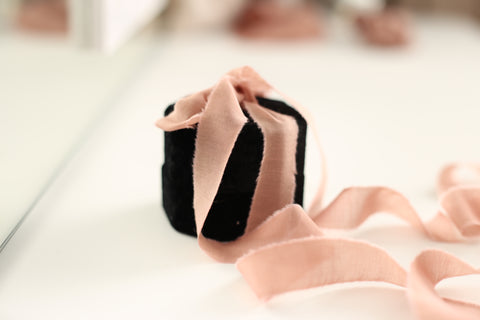Answers to your most important questions!
Posted by ALEXANDRA BORYSOVA

Why are your products unevenly colored and have unsightly stains?
We use organic dyes for fabric dyeing. For example, it can be shredded and dried spinach leaves, beetroot powder, turmeric or mustard powder. We brew all these gifts of nature in hot water and use them for dyeing. This process involves sea salt, baking soda and some other ingredients that we do not disclose, as it is our little professional secret. You understand that while dyeing fabric in large containers and stirring by hand, it is impossible to achieve an even distribution of color. Therefore, you see these spots and color transitions in the final product.

Why are your napkins so wrinkled?
We strictly adhere to our rustic organic style and send you products with minimal influences of modern technologies. We respect the environment and want to minimize the emission of carbon dioxide into the atmosphere. Therefore, you get the products that are as natural as possible, wrinkled, with raw edge.

Why can't I use your runners and napkins several times?
Everything happens because our goal is to give you a beautiful product using processing that does not harm nature. That is why we use thin fabrics (cotton and gauze), since they can be dyed by hand in relatively small containers with organic (natural) dyes and pigments. These pigments are not resistant to agressive modern detergents and cannot withstand repeated washing. You can use runners and napkins several times, but be ready that that the color will become less saturated after washing. The gauze may lose its original appearance. As to napkins, they will serve you longer, as they are made of thin, but dense cotton fabric.

Your ribbons are different in color compared to my order last year. Why?
Of course. And that's okay. It is very difficult to obtain the same shade from batch to batch using a pigment of natural origin. Almost everything effects the dyeing process! From the temperature of water, its chemical propeties (hardness, pH, mineralization) to the crop from which the pigment was made. If the summer was dry, the color of the pigment in the plants will be more saturated, and if the plants were harvested in the rainy autumn, then we expect a weak color on the fabric in the future. In this case, it is better to place an order for the required number of ribbons or runners to be sure that they were dyed in the same batch. If you have to make an additional order of fabric, be prepared that the shade will be different.

I received a ribbon, and there is a stain on it! How can this be?
This is our favorite natural pigment, which has left its mark on your ribbon. When we dye the fabric for future ribbons, it looks like this - a huge saucepan is on the fire, in which 7 meters of silk or cotton fabric is cooked together, for example, with spinach powder, in order to get sage ribbons in the end. The temperature is higher at the bottom of the pot than at the top. The color pigment can "stick" in some places on the fabric, and we get stains after dyeing. In the beginning we were very afraid of these stains and threw out the pieces of tissue where they formed. But then we realized that it was not "organic". We threw away a lot of beautiful natural fabrics and littered the environment. The decision was made- tapes and runners will be natural and original, the way water, nature and man create them. Many buyers fell in love with our products precisely for their originality and naturalness.

